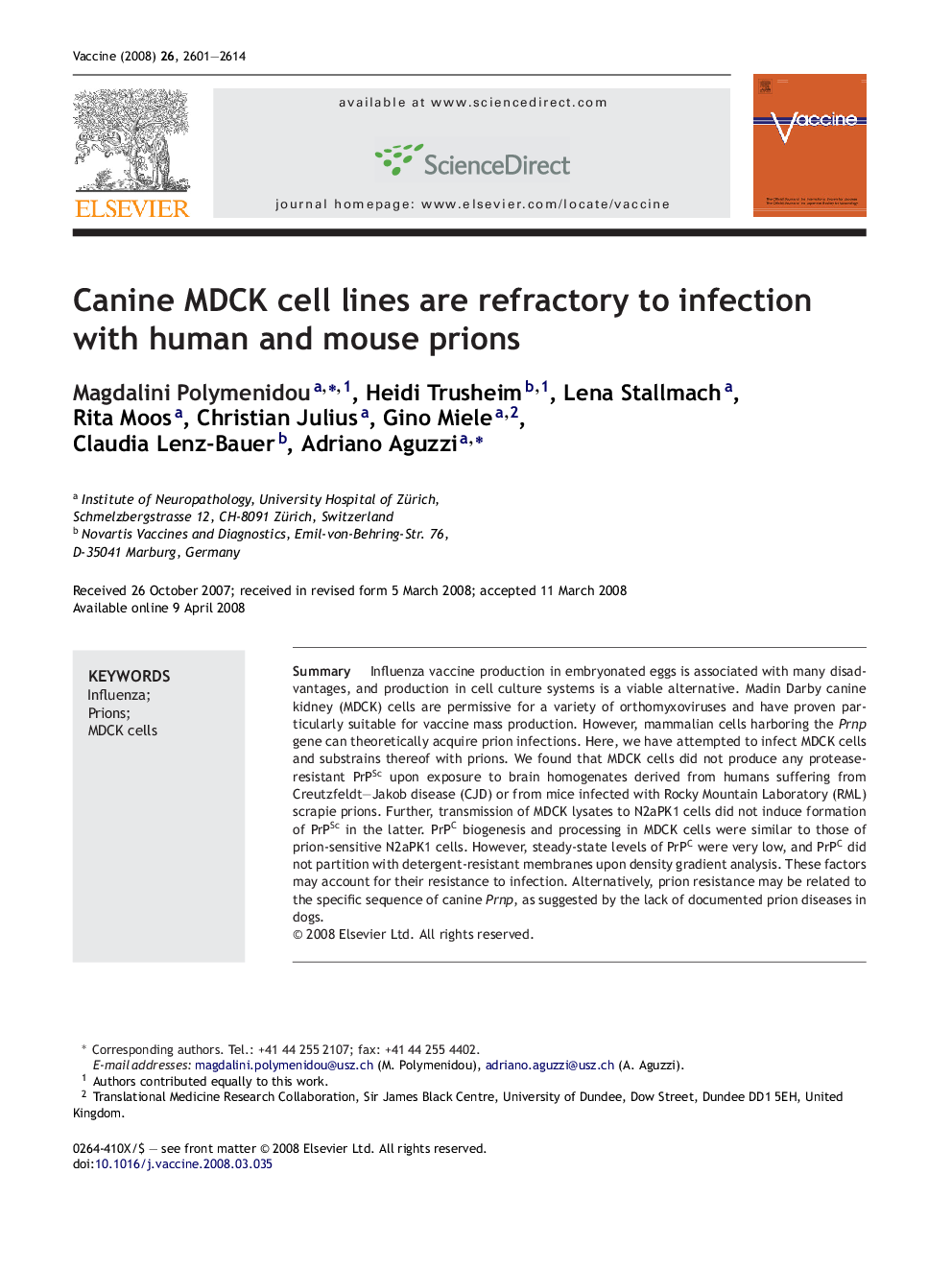| Article ID | Journal | Published Year | Pages | File Type |
|---|---|---|---|---|
| 2407071 | Vaccine | 2008 | 14 Pages |
SummaryInfluenza vaccine production in embryonated eggs is associated with many disadvantages, and production in cell culture systems is a viable alternative. Madin Darby canine kidney (MDCK) cells are permissive for a variety of orthomyxoviruses and have proven particularly suitable for vaccine mass production. However, mammalian cells harboring the Prnp gene can theoretically acquire prion infections. Here, we have attempted to infect MDCK cells and substrains thereof with prions. We found that MDCK cells did not produce any protease-resistant PrPSc upon exposure to brain homogenates derived from humans suffering from Creutzfeldt–Jakob disease (CJD) or from mice infected with Rocky Mountain Laboratory (RML) scrapie prions. Further, transmission of MDCK lysates to N2aPK1 cells did not induce formation of PrPSc in the latter. PrPC biogenesis and processing in MDCK cells were similar to those of prion-sensitive N2aPK1 cells. However, steady-state levels of PrPC were very low, and PrPC did not partition with detergent-resistant membranes upon density gradient analysis. These factors may account for their resistance to infection. Alternatively, prion resistance may be related to the specific sequence of canine Prnp, as suggested by the lack of documented prion diseases in dogs.
